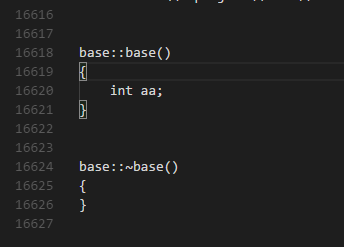The compilation of a C++ program involves three steps:
-
Preprocessing: the preprocessor takes a C++ source code file and deals with the
#includes,#defines and other preprocessor directives. The output of this step is a "pure" C++ file without pre-processor directives. -
Compilation: the compiler takes the pre-processor's output and produces an object file from it.
-
Linking: the linker takes the object files produced by the compiler and produces either a library or an executable file.
Preprocessing
The preprocessor handles the preprocessor directives, like #include and #define. It is agnostic of the syntax of C++, which is why it must be used with care.
It works on one C++ source file at a time by replacing #include directives with the content of the respective files (which is usually just declarations), doing replacement of macros (#define), and selecting different portions of text depending of #if, #ifdef and #ifndef directives.
The preprocessor works on a stream of preprocessing tokens. Macro substitution is defined as replacing tokens with other tokens (the operator ## enables merging two tokens when it makes sense).
After all this, the preprocessor produces a single output that is a stream of tokens resulting from the transformations described above. It also adds some special markers that tell the compiler where each line came from so that it can use those to produce sensible error messages.
Some errors can be produced at this stage with clever use of the #if and #error directives.
这里拓展开来说,直接实验验证,查看预编译文件就能发现真相;
1、获取预编译文件(.i)
vs2015设置
2、整体编译一波,单个文件编译不了
3、到这个目录下拿到.i文件

4、直接拖到最后面看文件,这里变成aa了


同时研究一下为啥c++ why a class has two file .h and .cpp;
链接 :http://www.math.uaa.alaska.edu/~afkjm/csce211/handouts/SeparateCompilation.pdf
主要就这句:
By doing this, if your class implementation doesn’t change then it won’t need to be recompiled.
Most IDE’s will do this for you – they will only recompile the classes that have changed.
This is possible when they are split up this way, but it isn’t possible if everything is in one file (or if the implementation is all part of the header file).
并且一般头文件都有
#ifndef __KAIWPP_WPPINFOHELPER_SHAPEINFOHELPER_H__
#define __KAIWPP_WPPINFOHELPER_SHAPEINFOHELPER_H__
#endif //!__KAIWPP_WPPINFOHELPER_SHAPEINFOHELPER_H__
类似这个玩意,防止重定义,上面那个实验也可以验证这个
Compilation
The compilation step is performed on each output of the preprocessor. The compiler parses the pure C++ source code (now without any preprocessor directives) and converts it into assembly code. Then invokes underlying back-end(assembler in toolchain) that assembles that code into machine code producing actual binary file in some format(ELF, COFF, a.out, ...). This object file contains the compiled code (in binary form) of the symbols defined in the input. Symbols in object files are referred to by name.
Object files can refer to symbols that are not defined. This is the case when you use a declaration, and don't provide a definition for it. The compiler doesn't mind this, and will happily produce the object file as long as the source code is well-formed.
Compilers usually let you stop compilation at this point. This is very useful because with it you can compile each source code file separately. The advantage this provides is that you don't need to recompile everything if you only change a single file.
The produced object files can be put in special archives called static libraries, for easier reusing later on.
It's at this stage that "regular" compiler errors, like syntax errors or failed overload resolution errors, are reported.
Linking
The linker is what produces the final compilation output from the object files the compiler produced. This output can be either a shared (or dynamic) library (and while the name is similar, they haven't got much in common with static libraries mentioned earlier) or an executable.
It links all the object files by replacing the references to undefined symbols with the correct addresses. Each of these symbols can be defined in other object files or in libraries. If they are defined in libraries other than the standard library, you need to tell the linker about them.
At this stage the most common errors are missing definitions or duplicate definitions. The former means that either the definitions don't exist (i.e. they are not written), or that the object files or libraries where they reside were not given to the linker. The latter is obvious: the same symbol was defined in two different object files or libraries.